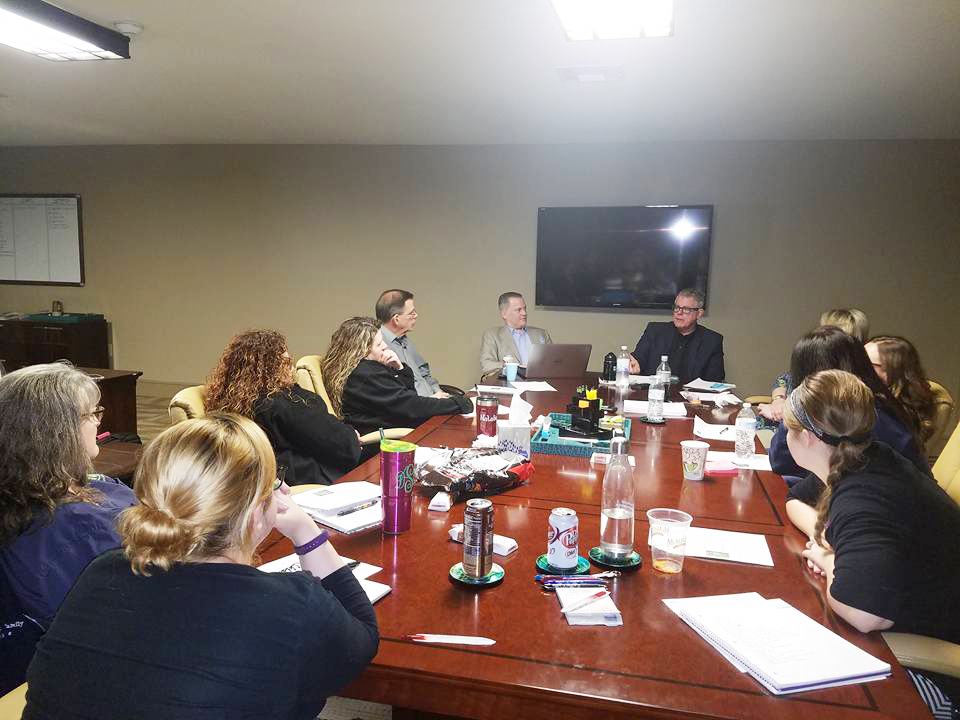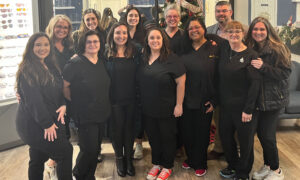By Peter J. Cass, OD

Oct. 25 2017
Your staff may be well trained, and seemingly happy, but you still need to find ways to motivate them, and keep them engaged in serving patients and growing the practice.
I’ve found that employees who feel appreciated and rewarded are more concerned about the success of the practice. They want to see the schedule full, provide exceptional customer service, provide patients with the best quality products, and help the practice grow.
Invest in Your Team
On average, I spend around $24,000 annually on staff-wide bonuses, which I strongly believe has helped my one-location, 1.2 full-time OD practice grow 187 percent in the past six years (20 percent last year alone). I want to have the best employees possible, so I offer competitive salaries, even before factoring in the bonus. The bonus adds to the salary, and makes it hard for employees to find a better-paying job in our local market. I believe this is important for ensuring that I attract and retain the best employees.

Dr. Cass and his staff holding a regular meeting. Dr. Cass says that keeping staff aware of practice finances, and rewarding the whole team when the practice does well, spurs growth and profitability.
Reward Whole Team for Practice Success
I believe in motivating the group. We have a single bonus system that compensates everyone or no one.
My 10 support staff members, including three opticians, are all rewarded when the practice meets its financial goals. We use a system similar to the Great Game of Business in which staff members are each responsible for tracking, and improving, practice metrics, such as eyewear capture rate, or number of annual supplies of contact lenses sold.
I set a goal for collections for the month. If we deposit that much in the bank, each employee receives $100. For every 5 percent over the goal, each employee receives an extra $50. The collection goal was originally based on the amount necessary to pay the expenses and have profit remaining. As the practice grew, the goals increased proportionally to the growth. Each monthly goal is now focused on increased collections over the prior year.
Share Practice Finances & Give Staff a Stake in Growth
I practice open-book management to a degree. I explain the profit and loss statements to the staff and share income, as well as major expense category amounts and percentages with the staff:
• COGS <30 percent (Frames, Contacts, Labs, etc.)
• Overhead <7 percent
• Occupancy <7 percent
• Employee <21 percent
• Equipment <4 percent
• Marketing <3 percent
Show Staff Big Picture–Larger Goals–Working Toward
It is important to explain to the staff the business principles of a collection goal. If we collect a certain amount, it pays all the bills, and the remainder is profit. That profit is then available not just for me, but to share with the staff, pay down business debt, reinvest in the practice and purchase new equipment.
When the staff understands that more profit means more profit sharing, they not only work hard to increase income; they also work to decrease expenses. For example, my staff is extremely motivated to keep the schedule full, and is very concerned about the prompt filing of claims. They also closely scrutinize bills from vendors for accuracy, and are careful with spending now that they understand a P&L statement.
Create Friendly Environment with Employee Input on Small Rewards
I believe in treating the staff well and creating a family atmosphere at the office. For each employee’s birthday, I let that employee pick a restaurant, and I take the entire staff out to lunch. On especially stressful or long days, I buy coffee, cupcakes, or some small treat for everyone. For major milestones we do something special. For example, when we first collected $1,000,000, I took the entire staff on a cruise. Birthday meals and treats for the office are included in meals and entertainment (under “overhead”).
Use Training to Motivate
To receive a bonus all employees must be certified by AOA, JCAHPO or ABO. Not only does this improve the quality of care that my staff gives, but employees who feel supported, and receive training for their job, feel more confident, are happier, and perform better.
My practice and the care given to patients can only be as good as my staff. Constant training is a key part of maintaining high-quality patient care. All staff are required to be certified, but I pay for training materials, continuing education and tests. Each employee has their certifications framed and hung on the walls down our main hallways with their picture above their certificates.
Investing in my staff is important to me. In fact, we had one employee who was a great optician, but had never received her high school diploma or eyecare-related certifications. We helped her enroll in a GED program and helped her study for her tests. When she passed, we bought a cake for her and had a small party to celebrate. She ultimately went on to become certified through the AOA, and her confidence level and sales ability has increased.
More than one employee has enjoyed the learning process so much that they have received multiple certifications. We also partner with vendors for training, and have sent employees to labs or vendor headquarters for training. We also take employees to major trade shows, including Vision Expo and state association meetings.
I plan to increase the number of shows that I take my staff to. I find that the more I expose them to, the more they are able to understand the need for change, and the more they can contribute to improving the practice. It’s an investment in the success of the practice.
 Peter J. Cass, OD, is the owner of Beaumont Family Eye Care in Beaumont, Texas, and president of the Texas Optometric Association. To contact: pcassod@gmail.com
Peter J. Cass, OD, is the owner of Beaumont Family Eye Care in Beaumont, Texas, and president of the Texas Optometric Association. To contact: pcassod@gmail.com


























